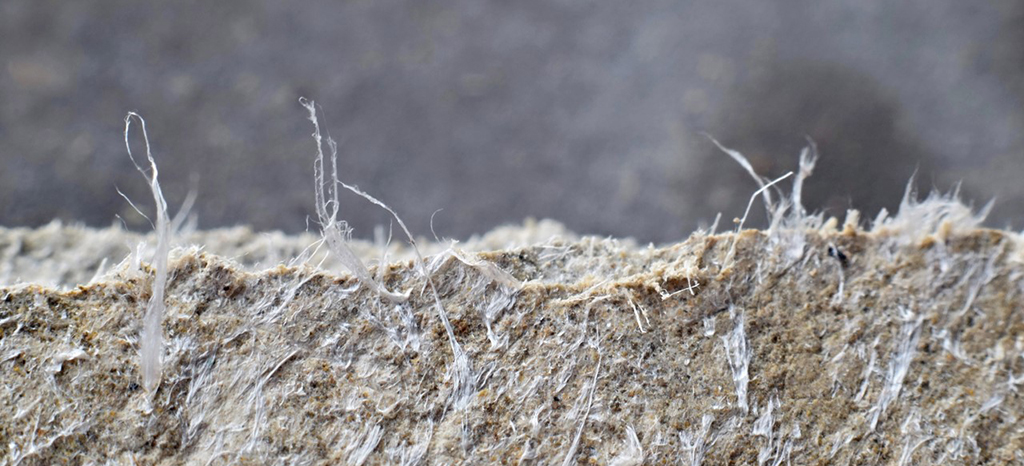Asbestos is a naturally occurring mineral that is composed of fibrous crystals. It is mined from the ground in countries all over the world. Because of its durable and fire-resistant properties, manufacturers have used asbestos in a variety of construction, electrical, and mechanical products. It has been a popular material since the late 1800s.
Working With Asbestos is High Risk
When the asbestos is broken down, it releases fibers into the air. Those fibers can penetrate body tissue. If someone inhales asbestos fibers, the fibers can get stuck in the lungs. Our bodies cannot always expel them. Once asbestos fibers are in our lungs, it can take decades for an asbestos-related disease to develop.
Millions of people have been exposed to asbestos in the workplace, including factory workers, insulation manufacturers and installers, miners, shipbuilders, plumbers, construction workers, as well as railroad and automotive workers. These employees’ family members may also have been at risk for secondary or “take-home exposure,” as a person can bring home the dangerous asbestos fibers on their work clothes.
Although industrial uses of asbestos reached its peak in the 1970s, it has taken decades for manufacturers to remove asbestos from their products entirely. Exposure to asbestos or working with fibrous materials is still considered high risk.
Asbestos can also be found in talcum powder products. Asbestos and talc are two minerals that are similar in composition and naturally form together over time. They are mined from the same locations and in the same manner. As a result, deposits of talc can be contaminated with asbestos and asbestos-like fibers. Talcum powder is used in a variety of personal hygiene and cosmetic products. Since the 1960s, there have been dozens of studies linking talcum powder to cancer.
Diseases You Can Develop From Asbestos
Asbestos was first linked with serious lung illnesses in the late 1800s. The first documented death due to asbestos happened in 1906. Since the mid-1900s, health officials have known that asbestos exposure can cause mesothelioma, lung cancer, and asbestosis.
Mesothelioma is a cancer of the lining of various organs. It occurs most often in the lungs and abdomen, but can also arise in the heart or testicles. Mesothelioma is further categorized as 1) epithelioid mesothelioma – a slow-growing cancer that is more receptive to treatment, 2) sarcomatoid mesothelioma – a faster-growing cancer, and 3) biphasic mesothelioma – a combination of epithelioid and sarcomatoid cancer cells.
Lung cancer is a cancer of the lung, rather than the lining of the lung. Asbestos exposure can cause lung cancer, especially if the individual is also a smoker.
Asbestosis is a noncancerous disease of the lung. With asbestosis, asbestos exposure causes scarring of the lungs, which restricts lung function and makes it difficult to breathe. This disease is chronic but usually nonfatal.
Products Containing Asbestos
Asbestos became popular in the 1800s and into the 1900s because it was inexpensive and easy to use. Asbestos is both fire retardant and resistant to electricity, making it an ideal material for several different industries. Asbestos has been used in:
- Shingles
- Roofing
- Concrete
- Bricks
- Sheetrock
- Insulation
- Flooring
- Pipe coverings
- Gaskets and packing
- Equipment coverings
- Fertilizer
- Automotive products (brakes, clutches)
- Fire-retardant textiles and clothing
- Dental molds
- Body powders
- Cosmetics
More recently, asbestos has also been discovered in industrial talc products as well as personal care talcum powder products such as baby powders and talc-based cosmetics.
Asbestos is Not Banned in the U.S.
In recent years, more than 60 countries and territories across the world have banned the use of asbestos. The U.S. does not have a ban in place; however, there are laws at the federal, state, and local level regulating the use of asbestos.
We have known for decades about the dangers of asbestos – how exposure to its fibers can lead to cancers and other serious diseases. But some companies continue to cover up evidence that their products and workplaces are toxic to employees and their families. Some businesses purchase “doubt science” experts to claim their products are safe; they also lobby to make it more difficult for asbestos victims and their families to be compensated.
If you or a loved one developed an illness after being exposed to asbestos, please reach out to Zinns Law at (888) 882-9002 or via our online contact page.

